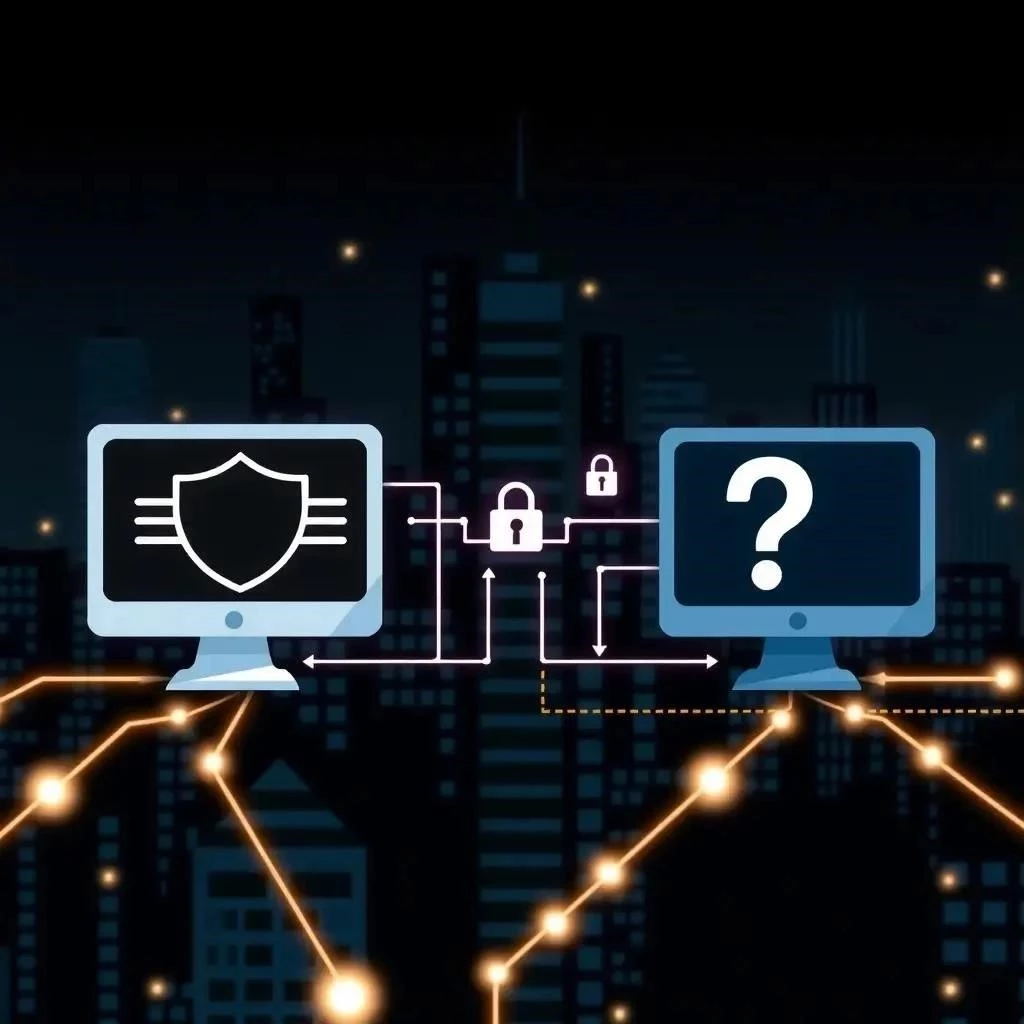Cryptocurrency‚ while revolutionary in its potential‚ is unfortunately susceptible to scams and fraudulent activities. The decentralized and often anonymous nature of cryptocurrency transactions makes them attractive to malicious actors. However‚ a crucial element lies at the heart of securing these digital assets: cryptography. Cryptography provides a robust layer of protection‚ enabling secure and verifiable transactions‚ thus significantly mitigating the risk of fraud. By understanding how cryptography works in this context‚ users can better navigate the cryptocurrency landscape and safeguard their investments. The power of cryptography is essential for maintaining trust and integrity within the cryptocurrency ecosystem.
The Foundation of Security: Cryptography Explained
Cryptography‚ at its core‚ is the science of encoding and decoding information. In the context of cryptocurrency‚ it employs complex mathematical algorithms to secure transactions and control the creation of new units. Let’s break down some key cryptographic concepts:
- Hashing: This process transforms data of any size into a fixed-size string of characters‚ known as a hash. Even a slight change in the original data will result in a drastically different hash value. This ensures the integrity of the data‚ as any tampering will be immediately detectable.
- Public-key Cryptography: This involves using a pair of keys: a public key and a private key. The public key can be shared freely‚ allowing others to encrypt messages intended for you or to verify your digital signature. The private key‚ on the other hand‚ must be kept secret and is used to decrypt messages or sign transactions.
- Digital Signatures: These are cryptographic “fingerprints” that verify the authenticity and integrity of a transaction. By signing a transaction with their private key‚ the sender proves that they authorized it‚ and anyone can verify the signature using the sender’s public key.
How Cryptography Prevents Specific Cryptocurrency Scams
The cryptographic principles discussed above are instrumental in thwarting various types of cryptocurrency scams:
Preventing Double-Spending
Double-spending is a critical concern in digital currencies. Without cryptography‚ a malicious actor could potentially spend the same digital coin multiple times. Cryptography‚ specifically through the use of digital signatures and the blockchain‚ prevents this:
- Each transaction is digitally signed by the sender‚ proving their ownership of the coins being spent.
- The transaction is then added to a block in the blockchain‚ a distributed and immutable ledger.
- Once a transaction is confirmed and added to the blockchain‚ it cannot be reversed or altered.
This process ensures that each unit of cryptocurrency can only be spent once‚ effectively preventing double-spending.
Securing Private Keys
Access to a user’s private key is equivalent to having control over their cryptocurrency. Scammers often try to steal private keys through phishing attacks or by exploiting vulnerabilities in software. Cryptography helps mitigate these risks in several ways:
- Wallet Security: Cryptographic techniques are used to secure cryptocurrency wallets. Strong encryption can protect the wallet file‚ making it difficult for unauthorized individuals to access the private keys stored within.
- Multi-Factor Authentication (MFA): Many cryptocurrency exchanges and wallets offer MFA‚ which adds an extra layer of security by requiring users to provide multiple forms of identification before accessing their accounts.
- Hardware Wallets: These physical devices store private keys offline‚ making them immune to online attacks. They require physical interaction to sign transactions‚ providing an additional layer of security.
Combating Phishing Attacks
Phishing attacks involve tricking users into revealing their sensitive information‚ such as private keys or passwords. While cryptography cannot directly prevent phishing attacks‚ it can help users identify fraudulent websites and communications. By verifying the authenticity of websites and email senders through digital certificates and encryption‚ users can reduce their risk of falling victim to phishing scams.
FAQ: Cryptography and Cryptocurrency Security
- Q: Can cryptography guarantee 100% security against cryptocurrency scams?
- A: While cryptography provides a strong foundation for security‚ it is not a silver bullet. Users must also practice good security hygiene‚ such as using strong passwords‚ enabling MFA‚ and being wary of phishing attacks.
- Q: What is the role of the blockchain in cryptocurrency security?
- A: The blockchain acts as a tamper-proof record of all cryptocurrency transactions. Its distributed and immutable nature makes it extremely difficult for malicious actors to alter transaction history or engage in fraudulent activities.
- Q: How can I learn more about cryptography and cryptocurrency security?
- A: Numerous online resources‚ including educational websites‚ online courses‚ and cryptocurrency communities‚ offer valuable information on cryptography and cryptocurrency security. It’s important to stay informed about the latest threats and best practices.
Beyond the Basics: Lingering Questions about Crypto Security
We’ve explored the core principles of cryptography and its role in safeguarding cryptocurrency transactions. But does our understanding end there? Shouldn’t we delve deeper into the evolving landscape of crypto threats and the ever-adapting cryptographic solutions designed to combat them?
Emerging Threats and Evolving Cryptography: Are We Keeping Pace?
Considering the constant evolution of technology‚ can current cryptographic methods truly withstand the test of time? As quantum computing advances‚ will traditional encryption algorithms become vulnerable‚ requiring a shift to quantum-resistant cryptography? Are we adequately preparing for the potential vulnerabilities that new types of attacks‚ like 51% attacks or sophisticated social engineering schemes‚ might expose? And what role do smart contract audits play in identifying and mitigating cryptographic weaknesses within decentralized applications?
The Human Element: Is User Education Enough?
While cryptography provides robust technical safeguards‚ can we truly rely on user education alone to prevent scams? Even with a solid understanding of security best practices‚ are users truly immune to cleverly crafted phishing attacks or sophisticated manipulation techniques? Should exchanges and wallet providers implement more proactive measures‚ like transaction risk scoring or automated fraud detection systems‚ to further protect users from their own potential errors? And what about the accessibility of security tools – are they designed with the average user in mind‚ or do they remain too complex for widespread adoption?
Decentralization vs. Security: Is There a Trade-Off?
Given the inherent tension between decentralization and security‚ how do we strike the right balance? Does complete decentralization necessarily lead to increased vulnerability‚ or can robust cryptographic solutions ensure security even in a fully decentralized environment? Should we consider more hybrid approaches‚ where certain aspects of security are centralized to provide enhanced protection‚ without compromising the fundamental principles of decentralization? And what role do regulatory frameworks play in shaping the security landscape of the cryptocurrency ecosystem – can they effectively promote security without stifling innovation?
FAQ: More Unanswered Questions
- Q: What are the biggest cryptographic challenges facing the cryptocurrency ecosystem today?
- A: Could it be the threat of quantum computing‚ the need for more robust smart contract security‚ or the ongoing battle against sophisticated phishing attacks?
- Q: How can we improve the accessibility and usability of cryptocurrency security tools?
- A: Should we focus on developing more intuitive interfaces‚ providing clearer explanations of security concepts‚ or offering personalized security recommendations?
- Q: What is the future of cryptocurrency security in a world of increasingly sophisticated threats?
- A: Will we see a greater emphasis on multi-layered security approaches‚ the development of new cryptographic algorithms‚ or the adoption of more proactive fraud detection systems?
Ultimately‚ the quest for secure cryptocurrency transactions is an ongoing journey‚ not a destination. Are we truly prepared to confront the ever-evolving challenges that lie ahead‚ and will cryptography continue to be the cornerstone of trust and security in the digital age?
‚ but do not use comparative tables.
Cryptocurrency transactions‚ while offering decentralization and autonomy‚ are not immune to scams and fraudulent activities. But what exactly is it about cryptography that makes it so vital in protecting your digital assets? How does this complex field of mathematics and computer science act as a shield against malicious actors seeking to exploit vulnerabilities in the cryptocurrency ecosystem? Cryptography helps protect cryptocurrency transactions by safeguarding private keys‚ securing wallet data‚ and authenticating transactions‚ but how are these protections actually implemented in practice?
Understanding the Basics: Cryptography and Security
At its core‚ cryptography involves using algorithms to encrypt and decrypt data‚ ensuring confidentiality‚ integrity‚ and authenticity. Does this mean that all cryptographic methods are created equal‚ or are some algorithms inherently more secure than others? Are the cryptographic techniques used in cryptocurrency the same as those used in traditional banking systems‚ and if not‚ what are the key differences? And how do these cryptographic principles translate into tangible security measures that protect cryptocurrency users from fraud?
Protecting Private Keys
Private keys are essential for accessing and managing cryptocurrency holdings. But what happens if these keys fall into the wrong hands? Don’t scammer often try to steal private keys through phishing attacks or by exploiting vulnerabilities in software? Cryptography helps mitigate these risks in several ways:
- Wallet Security: Cryptographic techniques are used to secure cryptocurrency wallets. Strong encryption can protect the wallet file‚ making it difficult for unauthorized individuals to access the private keys stored within. But how effective is this encryption against brute-force attacks‚ and are there any known vulnerabilities in popular wallet encryption methods?
- Multi-Factor Authentication (MFA): Many cryptocurrency exchanges and wallets offer MFA‚ which adds an extra layer of security by requiring users to provide multiple forms of identification before accessing their accounts. But is MFA foolproof‚ or can it be bypassed by sophisticated attackers who are skilled in social engineering?
- Hardware Wallets: These physical devices store private keys offline‚ making them immune to online attacks. They require physical interaction to sign transactions‚ providing an additional layer of security. But are hardware wallets completely invulnerable‚ or are there potential weaknesses in their hardware or firmware that could be exploited?
Phishing attacks involve tricking users into revealing their sensitive information‚ such as private keys or passwords. While cryptography cannot directly prevent phishing attacks‚ it can help users identify fraudulent websites and communications. By verifying the authenticity of websites and email senders through digital certificates and encryption‚ users can reduce their risk of falling victim to phishing scams. But are digital certificates and encryption sufficient to protect against all types of phishing attacks‚ particularly those that are highly sophisticated and targeted? Shouldn’t users also be educated on how to identify suspicious emails and websites‚ and should exchanges implement more robust anti-phishing measures?
- Q: Can cryptography guarantee 100% security against cryptocurrency scams?
- A: While cryptography provides a strong foundation for security‚ it is not a silver bullet. Users must also practice good security hygiene‚ such as using strong passwords‚ enabling MFA‚ and being wary of phishing attacks. But is even the best security hygiene enough to protect against all types of scams‚ and are there any situations where cryptography alone is insufficient?
- Q: What is the role of the blockchain in cryptocurrency security?
- A: The blockchain acts as a tamper-proof record of all cryptocurrency transactions. Its distributed and immutable nature makes it extremely difficult for malicious actors to alter transaction history or engage in fraudulent activities. But is the blockchain truly immutable‚ and are there any potential vulnerabilities that could allow malicious actors to tamper with transaction data? And how does the blockchain protect against double-spending attacks‚ and are there any alternative consensus mechanisms that offer even greater security?
- Q: How can I learn more about cryptography and cryptocurrency security?
- A: Numerous online resources‚ including educational websites‚ online courses‚ and cryptocurrency communities‚ offer valuable information on cryptography and cryptocurrency security. It’s important to stay informed about the latest threats and best practices. But are these resources always accurate and up-to-date‚ and should users rely solely on online information or seek professional advice from security experts?
We’ve explored the core principles of cryptography and its role in safeguarding cryptocurrency transactions. But does our understanding end there? Shouldn’t we delve deeper into the evolving landscape of crypto threats and the ever-adapting cryptographic solutions designed to combat them?
Considering the constant evolution of technology‚ can current cryptographic methods truly withstand the test of time? As quantum computing advances‚ will traditional encryption algorithms become vulnerable‚ requiring a shift to quantum-resistant cryptography? Are we adequately preparing for the potential vulnerabilities that new types of attacks‚ like 51% attacks or sophisticated social engineering schemes‚ might expose? And what role do smart contract audits play in identifying and mitigating cryptographic weaknesses within decentralized applications?
While cryptography provides robust technical safeguards‚ can we truly rely on user education alone to prevent scams? Even with a solid understanding of security best practices‚ are users truly immune to cleverly crafted phishing attacks or sophisticated manipulation techniques? Should exchanges and wallet providers implement more proactive measures‚ like transaction risk scoring or automated fraud detection systems‚ to further protect users from their own potential errors? And what about the accessibility of security tools – are they designed with the average user in mind‚ or do they remain too complex for widespread adoption?
Given the inherent tension between decentralization and security‚ how do we strike the right balance? Does complete decentralization necessarily lead to increased vulnerability‚ or can robust cryptographic solutions ensure security even in a fully decentralized environment? Should we consider more hybrid approaches‚ where certain aspects of security are centralized to provide enhanced protection‚ without compromising the fundamental principles of decentralization? And what role do regulatory frameworks play in shaping the security landscape of the cryptocurrency ecosystem – can they effectively promote security without stifling innovation?
- Q: What are the biggest cryptographic challenges facing the cryptocurrency ecosystem today?
- A: Could it be the threat of quantum computing‚ the need for more robust smart contract security‚ or the ongoing battle against sophisticated phishing attacks?
- Q: How can we improve the accessibility and usability of cryptocurrency security tools?
- A: Should we focus on developing more intuitive interfaces‚ providing clearer explanations of security concepts‚ or offering personalized security recommendations?
- Q: What is the future of cryptocurrency security in a world of increasingly sophisticated threats?
- A: Will we see a greater emphasis on multi-layered security approaches‚ the development of new cryptographic algorithms‚ or the adoption of more proactive fraud detection systems?
Ultimately‚ the quest for secure cryptocurrency transactions is an ongoing journey‚ not a destination. Are we truly prepared to confront the ever-evolving challenges that lie ahead‚ and will cryptography continue to be the cornerstone of trust and security in the digital age? Or will the future of crypto security require a paradigm shift‚ moving beyond traditional cryptographic approaches to embrace new and innovative solutions?
The Future of Cryptocurrency Security: What Lies Ahead?
Given the rapid pace of technological advancement and the ever-evolving threat landscape‚ what innovative security solutions might emerge in the coming years? Will advancements in artificial intelligence and machine learning play a crucial role in detecting and preventing fraudulent activities? Could biometrics and other forms of advanced authentication become more prevalent‚ offering enhanced security and user convenience? And what about the potential for decentralized identity solutions to empower users with greater control over their personal data and reduce the risk of identity theft? Will these emerging technologies truly revolutionize cryptocurrency security‚ or will they introduce new and unforeseen vulnerabilities that we must address?
Beyond Cryptography: The Holistic Security Approach
While cryptography is undeniably essential‚ should we also consider a more holistic approach to cryptocurrency security that encompasses not only technological safeguards but also ethical considerations‚ regulatory frameworks‚ and community-driven initiatives? Should the cryptocurrency industry adopt stricter self-regulatory standards to promote transparency and accountability? What role can governments play in creating a clear and consistent regulatory environment that fosters innovation while protecting consumers from fraud? And how can we empower the cryptocurrency community to actively participate in identifying and reporting security vulnerabilities‚ thereby strengthening the overall security posture of the ecosystem? Does a truly secure cryptocurrency future depend on a collaborative effort that transcends technical solutions and embraces a more comprehensive and ethical approach?
The Quantum Threat: Are We Ready?
The looming threat of quantum computing casts a long shadow over the future of cryptography. Are we truly prepared for the day when quantum computers become powerful enough to break existing encryption algorithms? Are researchers making sufficient progress in developing quantum-resistant cryptographic algorithms that can withstand these attacks? Should cryptocurrency projects begin transitioning to quantum-resistant cryptography now‚ even before the threat is fully realized? And what steps can individuals and businesses take to protect their cryptocurrency holdings from the potential risks posed by quantum computing? Is the quantum threat an insurmountable challenge‚ or can we adapt and evolve to maintain the security of our digital assets in the face of this technological revolution?
- Q: What new cryptographic techniques are being developed to address the evolving threat landscape?
- A: Could homomorphic encryption‚ zero-knowledge proofs‚ and secure multi-party computation play a more prominent role in cryptocurrency security?
- Q: How can we encourage greater collaboration between security researchers‚ cryptocurrency developers‚ and regulatory bodies to improve the overall security of the ecosystem?
- A: Should we establish more formal channels for communication and information sharing‚ create incentives for responsible vulnerability disclosure‚ and promote the adoption of open-source security tools?
- Q: Will the future of cryptocurrency security be defined by technological innovation‚ regulatory frameworks‚ or a combination of both?
- A: And can we create a secure and sustainable cryptocurrency ecosystem that benefits everyone?





